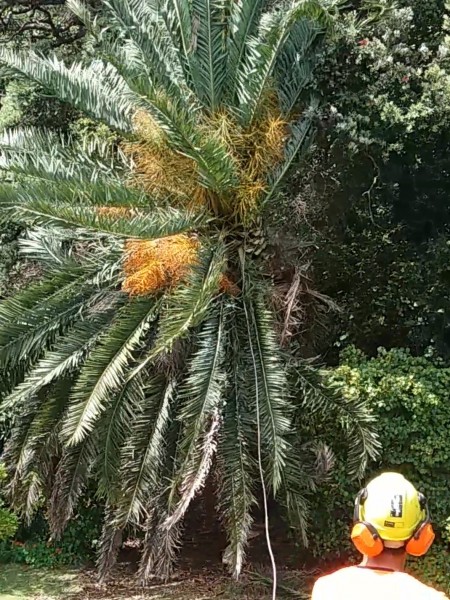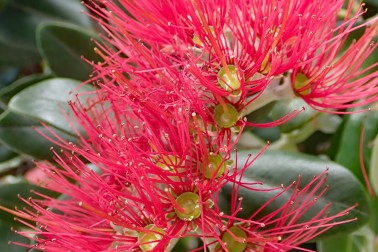
Credit: Craig McKenzie
Approximately 200 members work on wetland, coastal and forest projects in the region.
The Eastern Bay of Plenty Branch includes Whakatāne, Kawerau and Ōpōtiki Districts. It has a long coastline but also important inland areas such as Te Urewera and Whirinaki. The climate, beaches and natural environment attract tourists and holiday makers and are important to locals for recreation. This can result in conflict with nature, especially on beaches where the threatened NZ dotterel and other shorebirds live.
Whakatane and Kawerau have some very special landscape features – Kohi Point, Mt Putauaki (Edgecumbe), and many rivers: Tarawera, Rangitaiki, Whakatāne, Waioeka, Ōtara, Haparapara, Kereu, Mōtū, Raukokere, and Whangaparāoa. Wetlands in our branch area are significantly reduced.
Branch Activities
The Branch runs a native plant nursery and holds one or two sales each year which help fund branch activities. The Branch undertakes many activities to restore the environment to its natural state. Shorebird and coastal protection have always been important in this branch and we have helped fund pest control and restoration in wetlands on the Rangitaiki Plains and native forest in the bush reserves adjoining Whakatāne town. We also fund a marine education scholarship and run an annual Youth Award.
There are 4 main projects in the branch area:

Phoenix palm removal
- Whakatāne Harbour Care which was started by the branch in 2010 which is protecting both the estuary and offshore islands with bait stations along the river, and is actively restoring the Apanui saltmarsh.
- Waiewe Stream Restoration Project which has restored most of a neglected council watercourse reserve in Hillcrest Whakatane from exotic weeds to native bushland.
- Phoenix Palm Removal: Female phoenix palms produce large fleshy seeds attractive to birds, especially kereru, and rats which sometimes live in the top, which are being spread into nearby native bush, wetland and dune habitats in Whakatane (and elsewhere). This project helps landowners remove the female seed sources. It has been funded by a grant from the Bay of Plenty Regional Council Environmental Enhancement Fund (no longer available), donations from landowners, and branch funds. Contractors are used for the removal as the palms are very large and have poisonous spines which cause nasty injuries and infections. There are numerous females on Whakatane District Council land, including near sportsfields and playgrounds. Part of this project is advocacy about the risks of this plant and advocating to council to include a budget for their removal.
- Whakatāne Reserves Weed Project is funded by generous donations for weed removal in the Mokorua and Kohi Point Scenic Reserves. Although some weed removal is done by volunteers, suitably qualified and equipped contractors are mostly used in association with the council. Weeds targeted include wilding pine, pampas, climbing asparagus, cotoneaster, woolly nightshade, coastal banksia and Taiwan cherry.
Branch Issues
There are many conservation issues for our branch. Protecting shorebird nesting sites requires advocacy to the councils to introduce and enforce bylaws and education and include provisions in regional and district plans.
A lot of work is done under the RMA making submissions on resource consents to ensure the best possible conditions to avoid, remedy or mitigate adverse effects on the environment e.g. the renewal of Trustpower’s Matahina dam consent where extensive fish passage conditions have been imposed and gravel extractions from the rivers where banded dotterel may nest.
The branch has put in a lot of effort to secure sound district and regional plan provisions, especially those affecting indigenous biodiversity and landscapes and environmental sustainability and has put significant effort into the Whakatāne and Ōpōtiki District Plans, and the Bay of Plenty Regional Coastal Environment Plan.
Rivers are a focus for catchment planning. The LAWA website www.lawa.org.nz is showing increased nitrogen and turbidity in the Rangitaiki River at Murupara, likely attributable to land use intensification in the upper catchment, and turbidity and bacteria levels at Te Teko being in the bottom 50% of equivalent sites, and the bottom 25% for nitrogen and phosphorus.
Several years ago Branch action stopped the building of an eight storey building at Whakatāne Heads which would have seriously impacted on the outstanding landscapes of Kohi Point and the Ōpihi Spit. The Court awarded the branch significant costs which the developer, Robert Power, has yet to pay.
Get involved
Our branch always appreciates the help of volunteers and encourages people to take part in our activities.
The old adage ‘many hands make light work’ is very true in conservation. The more people to help, the more we can achieve. The Branch welcomes anyone with ideas for activities and excursions. If you would prefer to help our admin or communications etc contact Linda on 073077108.
Become a shorebird volunteer – help with pest control and bird monitoring on our beaches from September to around February. Contact Linda on 07 3077108.
Whakatāne Harbour Care – bait stations, wetland restoration, community activities. Contact Gaye on 0274034598,
Waiewe Stream Restoration Project – contact Annette on 073070227 to help maintain this lovely reserve in Hillcrest which Annette and her helpers have transformed from weed heaven to a beautiful area with native trees and lots of birds.
Whakatāne Bird Rescue
If you need help with injured birds contact 027 209 0567

